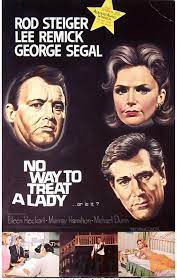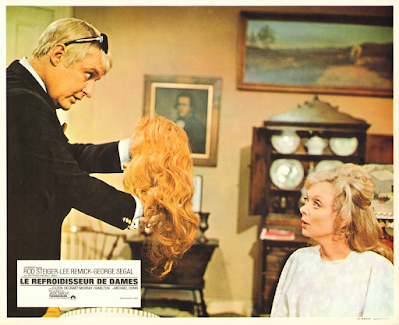Wonderland Burlesque's
Let's All Go To The Movies
She's A Lady
Part IX
Or so these films would have us believe.
They promise lots of drama, the occasional comedy or musical, and a little bit of dirt!
Let's take a walk down Hollywood Blvd. and shine a light on these magnificent classic films.
This way, if you please. But remember...
Ladies first!
They promise lots of drama, the occasional comedy or musical, and a little bit of dirt!
Let's take a walk down Hollywood Blvd. and shine a light on these magnificent classic films.
This way, if you please. But remember...
Ladies first!
--- ---
Almost A Lady
(1926)
Marcia, a pretty young girl, goes to work as a model for a lecherous dress-shop owner. She resists his advances, despite all the expensive gifts he keeps giving her. One day, Mrs. Reilly, a prominent society woman and a customer of the shop, invites Marcia to a party she's throwing. Marcia winds up impersonating a famous writer in order to impress a 'duke' for Mrs. Reilly, who doesn't know the 'duke' isn't really a duke. Complications ensue.
This American silent romantic comedy was directed by E. Mason Hopper and stars Marie Prevost and Harrison Ford.
--- ---
Talk About A Lady
(1946)
Produced and distributed by Columbia Pictures, this American musical was directed by George Sherman and stars Forrest Tucker, Jinx Falkenburg and Trudy Marshall.
Featured the song, Never Had A Dream Come True, written by Allan Roberts and Doris Fisher.
To Please A Lady
(1950)
AKA: Red Hot Wheels, Indianapolis
Mike Brannon is a former war hero turned midget car racer. His ruthless racing tactics have made him successful but the fans consider him a villain and boo him mercilessly. Independent, beautiful reporter Regina Forbes tries to interview him but is put off by his gruff chauvinism. When Brannon's daredevil tactics cause the death of a fellow driver, he finds himself a pariah in the sport thanks to her articles. Later, she finds him earning money as a barnstorming daredevil driver hoping for a comeback, they find themselves attracted to one another.
This American romance film produced and directed by Clarence Brown, and stars Clark Gable, Barbara Stanwyck and Adolphe Menjou.
According to a contemporary article in The Hollywood Reporter, Lana Turner was originally slated for the Stanwyck role.

Clarence Brown (Anna Karenina (1935), National Velvet (1944)), directed this film. It was the eighth and final film he worked on with Clark Gable, who was also his good friend.
On a personal level, being in Indianapolis was difficult for Clark Gable. The city had been the last stop on a war bond tour in 1942 for his second wife, actress Carole Lombard, before she was to fly back home to Los Angeles. Tragically, Lombard's plane never made it back. It crashed in Nevada killing everyone on board. Theirs had been a happy marriage, and it was a loss from which Gable never recovered. At the time of To Please a Lady (1950), Gable had finally remarried, this time to Douglas Fairbanks' widow, Sylvia Ashley. During filming, he seemed happier and healthier than he had in years according to friends. Even so, Gable remembered his beloved late wife while in Indianapolis. He quietly made a point to visit the downtown locations where Lombard had made her final public appearances before meeting her untimely death.
Second and last film to feature both Stanwyck and Gable. The first was Night Nurse (1931) at Warner Bros. Gable just had a supporting role in that film as a chauffeur.
The film's failure caused Clark Gable to fall out of the Top Ten Box Office stars list. According to MGM records, it earned $2,061,000 in North America and $861,000 elsewhere, resulting in a profit of $47,000.
Noose For A Lady
(1953)
Based on the novel Whispering Woman by Gerald Verner, this British crime drama was directed by Wolf Rilla and stars Dennis Price, Rona Anderson and Ronald Howard.
TV Guide called the film "Overly chatty", while Cinema Retro found it "A quaint, cliché ridden drama," concluding more positively, "yes, of course it creaks a little, but if nothing else it’s guaranteed to hold your attention for its succinct 70-minute runtime".
--- ---
No Way To Treat A Lady
(1968)
Christopher Gill is a psychopathic killer who uses various disguises to trick and strangle his victims. Moe Brummel is a single and harassed New York City police detective who starts to get phone calls from the strangler and builds a strange alliance as a result. Kate Palmer is a swinging, hip tour guide who witnesses the strangler leaving her dead neighbor's apartment and sets her sights on the detective. Moe's live-in mother wishes her son would be a successful Jewish doctor like his older brother.
Adapted by John Gay from William Goldman's 1964 novel of the same name, this American psychological thriller with elements of black comedy was directed by Jack Smight, and stars Rod Steiger, Lee Remick, George Segal, and Eileen Heckart.
Goldman wrote the original novel while experiencing writer's block, while writing Boys and Girls Together. He was inspired by an article about the Boston Strangler which suggested there might be two stranglers operating, and Goldman wondered what would happen if that were the case and they got jealous of each other.
Rod Steiger was initially approached to play the put-upon Jewish cop, not the fiendish serial killer - perhaps because he had recently had a great success playing a Jewish character in The Pawnbroker, and because the cop was the hero. After he told the producer that whoever played the killer would steal the film, he was offered that part instead. It is worth noting that the part of the killer has been greatly expanded in the film from William Goldman's novel, where the cop is definitely the central character.
Paramount was helmed by Robert Evans at the time. Tony Curtis was Evans' choice to play the detective, but Smight insisted that the role go to George Segal. "It's Steiger's film," said Segal. "He runs around doing all sorts of different roles and I just stop by and watch him. It's a big, comfortable Hollywood production and I have banker's hours."
Eileen Heckart filmed her scenes during the day while appearing on stage each night in You Know I Can't Hear You When the Water's Running.

--- ---
And that's all for now, folks.
Tune in next time.
Same place, same channel.
No Way To Treat A Lady - Movie Trailer
(1968)















































































































2 comments:
Ohhh I had forgotten that Clark Gable was married to Carole Lombard!
And the DRAMA about Dennis Price!
XOXO
Where are YOU?
I have not seen you comment in awhile....
XOXO
Post a Comment